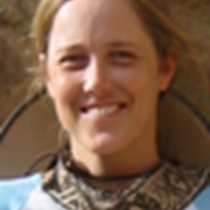Glacier Bay National Park
Early this morning the National Geographic Sea Lion entered the enormity of Glacier Bay National Park. The clouds hung low obscuring the tops of mountains. Consequently, much of this legendary landscape was left to the imagination. To some degree, we were content just scanning the milky expanse of the bay itself. The ship coasted along a line of confluence between two currents. Nutrient-rich waters escalated to the surface drawing an assortment of hungry birds. Tiny phalaropes gathered in tight clusters and busily probed the water for concentrations of microscopic creatures. Small rafts of gulls bickered over larger creatures entwined in sloughed off pieces of kelp that had also swirled up to the surface. Sea otters and an occasional harbor porpoise also made an appearance at this juncture of productivity.
Our scope expanded at South Marble Island, a sea lion haul-out as well as a very populated sea bird colony. Our senses overwhelmed, we gazed in awe upon the busy goings-on of this tightly condensed menagerie of animals. In unison, sea lions roared, gulls squawked and we, “ooooed” and “ahhhhed.” Attempting to isolate individual bird species, we used our binoculars. Visual aids and hints provided by our Glacier Bay National Park Rangers helped us to identify black legged kittiwakes, glaucous-winged gulls, common murres, pelagic cormorants and tufted puffins.
By midday, the park’s grandeur opened up to us in all its glory as the sun broke through the clouds. The breathtaking landscape, at large, commanded our full attention. The towering Fairweather mountain range was doubly impressive as it was reflected in the mirror like bay. Finally, Johns Hopkins Glacier came into view, one of the most beautiful places on earth. We were indeed fortunate to have a clear sky! The peaks were cast against a brilliant blue and the sun illuminated the smooth rock faces of glacially carved mountainsides. Floating ice dotted the bay near the glacier’s face. An unexpected detail in this fantastic scene, small groups of harbor seals rested on the flatter pieces.
By late afternoon, many of us retreated to the comfort of the lounge. The rangers discussed the parks history and its many marvels. Shortly, however, we were again out on the bow. Our approach was announced, as a beached humpback whale carcass came into view. Though it had been dead for at least three months, the whale still attracted scavengers including one of the more coveted sightings in Alaska, the brown bear. Sure enough, as we scanned the shoreline, an old bear lumbered out from the alders. Slowly it made its way over to the carcass and began ripping off pieces of rotting flesh. It was nature at its wildest!
From the quiet moments of a grey morning to a brilliant afternoon filled with unexpected surprises, we continue to be amazed at what Southeast Alaska has to offer!




